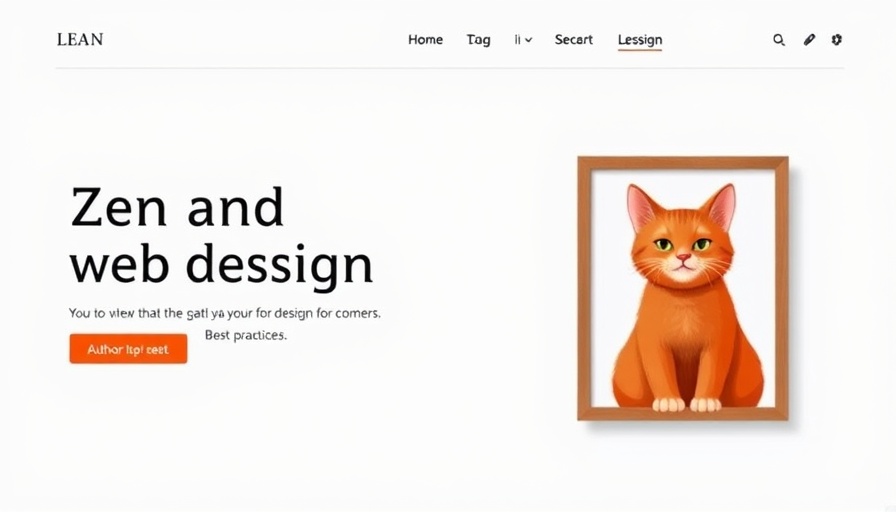
Finding Harmony in Design: What Zen Teaches Us About Web Design
In a digital landscape increasingly dominated by technology, the teachings of Robert M. Pirsig's Zen and the Art of Motorcycle Maintenance still resonate profoundly with today's web designers, especially those using platforms like WordPress. This 1974 classic prompts us to see beyond the mere mechanics of design, urging a marriage between technology and a thoughtful understanding of our craft.
Why Philosophy Matters in Design
Imagine embarking on a motorcycle journey across the United States, the road stretching endlessly ahead of you. As you ride, you face the realities of the mechanical alongside the charm of nature. Similarly, in web design, we are constantly at the intersection of cold efficiency and personal expression. Pirsig aptly illustrates that technology's value isn't defined solely by its functionality, but by how it can enrich our lives and experiences. Good web design should embody both form and function, creating spaces that feel alive and engaging.
Learning From the Past: Zen's Lessons for Modern Creators
The underlying message of Pirsig's work is that technology isn't an enemy; instead, it can be harmonized with our human desires and needs. When WordPress users craft a website, they often wrestle with the tension between aesthetic appeal and performance. Pirsig's views encourage designers to embrace this journey, resetting perceptions that the digital domain is devoid of humanity. Rather, it can be a canvas for meaningful expression, merging technical skills with emotive storytelling.
Navigating the Digital ''Death Force''
In Zen, destruction by technology is a recurring theme; the same can be said about the web today. As digital creators, we can feel confined by metrics, analytics, and the demand for user engagement. However, Pirsig reminds us that withdrawing from technology—seeing it as purely detrimental—creates a void, failing to recognize the beauty and potential for growth it holds. Instead, Web designers can incorporate this philosophy to foster creativity that transcends numbers, shaping a more human-centered digital landscape.
The Journey as a Form of Quality
Pirsig's approach to quality emphasizes the importance of both process and product. For modern designers, the creation of a WordPress theme is not just about the end result but how well the process aligns with the fundamental ideals of functionality and aesthetics. Quality in design can be modest yet powerful, focusing on intuitive layouts that invite exploration, rather than cluttered interfaces that restrict user freedom.
Actionable Insights: Improving Your Design Experience
For the aspiring or experienced WordPress user, embracing Pirsig's insights can significantly transform your approach to web design. Here are a few strategies to enhance your work:
- Embrace Playfulness: Allow yourself to explore new design templates that spark joy. The benefits of a joyful design process often translate into user experience.
- Balance Function with Emotion: Strive to create designs that resonate emotionally. Use visual storytelling to enhance your connection with users.
- Seek Continuous Improvement: Just as Pirsig's road trip reflects growth, see design as a continuous journey. Regularly seek feedback and experiment with fresh ideas.
Why This Matters for You
Understanding the philosophical underpinnings of your work can provide clarity in your process. Consider how each design decision affects the overall message you want to convey. This focus reminds you that your design isn't just a product; it's an invitation for interaction and community. As we create websites on WordPress, let’s focus on engaging users with impactful stories and designs that honor both form and function.
Call to Action: Share Your Journey
As you explore new ways to weave philosophy into your design processes, I encourage you to share your experiences. Whether through blog posts, social media, or forums, your voice can inspire others to discover the beauty inherent in both technology and art. Together, let’s foster a community that values creativity and quality in web design.
 Add Row
Add Row  Add
Add 




Write A Comment